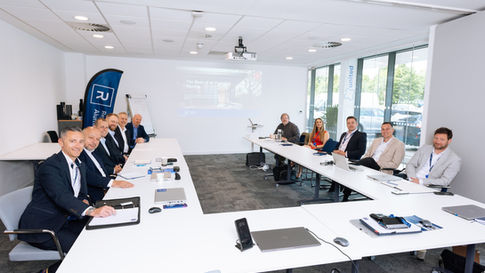As the UK moves towards a general election, both the opposition party and current UK government are viewing energy costs as a weapon to attract electoral ballots.

The current opposition party has made public proposals to reduce electrical costs by 23% to moderate UK customer energy costs. Rinnai has produced modelling and a set of calculations based on an accommodation block, featuring four separate appliances in a heating hot water delivery system:
1. R290 Commercial heat pump System: 6x 50kW R290 HPs + 6x 800L HP Buffers.
2. R290 Commercial heat pump system + Electric storage water heater: 4x 95kW iMAX HPs + 2x 800L HP Buffers + 2x 800L E-cylinders electric water heaters e/w 60kW Immersions.
3. Heat Pump + gas fired continuous flow water heater system: 4x 95kW iMAX + 2x 800L HP Buffers + 4x N1600 continuous flow water heaters + 2x 800L cylinders.
4. Gas-fired continuous flow waters = 8x N1600 continuous flow water heaters + 2x 1000L cylinders.
This analysis was carried out to understand how the operating cost of each system differs when using forecasted electricity costs, which suggest a reduction of 23% in national grid consumed electricity, compared to the current government forecasted national grid figures.
Costs of operating a R290 heat pump over five years is presently £105,192.60 and, under current opposition plans, will be £80,998.30. A heat pump and electrical cylinder over five years presently costs UK customers £165,664.60, and would cost £127,561.74. under the opposition’s 23% reduction plans. While a heat pump and water heater using the same metric currently costs £89,731.90, but this would drop to £76,291.29 over a five-year period.
Reductions over a five-year period are clear when observing heat pump and hybrid systems. Widespread electrification is a main objective by UK policy makers, investing in a domestic or commercial application electric hybrid heating and hot water system could potentially result in huge operational cost reductions.
.png)








































.png)










